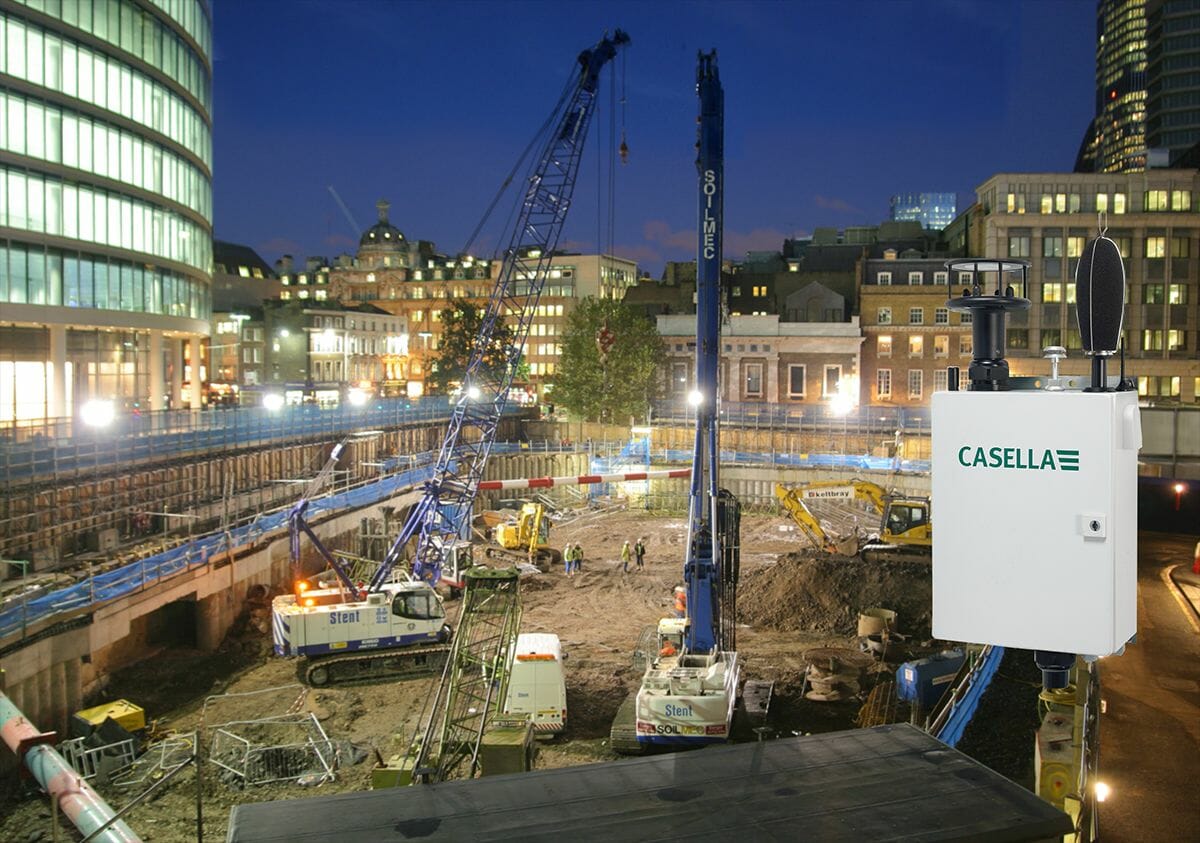
Are you managing the impact of your construction site? Boundary monitoring can identify potential hazards, ensure compliance and protect the public from job-site hazards
Construction dust can compromise air quality, environmental noise pollution can be harmful to workers and local residents, and excessive vibration can have damaging consequences. Alongside the human cost to health, fines of up to £20,000 ($30,000) per violation are possible if preventable noise and dust exceed agreed emissions levels, and penalised companies may pay the additional price of reputational damage.
Site management has a duty of care to protect against potentially dangerous conditions. However, this can be challenging to manage without reliable data streams and instrumentation that gathers environmental information. Monitoring for noise, dust, vibration and harmful emissions makes it possible to manage the impact of your construction site.
Boundary monitoring can support construction site control by minimising potential contamination, protecting the public from jobsite hazards and allowing for adherence to the appropriate public health requirements. Consequently, more companies are turning to boundary monitoring technology to measure the risks and ensure they adhere to environmental limits and guidelines.
To help site management teams make the most of the technology, Tim Turney, Global Marketing Manager at occupational hygiene and workplace hazard monitoring expert Casella, shares the Do’s and Don’ts of boundary monitoring.
Do know your site
You must understand the area that surrounds your site and which locations to monitor. Large sites may need monitoring in more than one location, depending on the receptors around the site. For example, sites with nearby receptors such as schools, hospitals, or housing, will be more sensitive to disruption and require more monitoring. You may also have to measure vibration to avoid disruption or damage if sensitive buildings or people are working around the site.
Being aware of the prevailing wind around your site is also essential. Ideally, a dust monitor should be both upwind and downwind of your site so that you can see the dust levels accumulating in your site and leaving it. Coupled with a wind speed direction sensor, this will allow you to mitigate and provide evidence against any complaints should they arise, with accurate data on whether excessive dust resulted from your site’s activity.
Don’t mount monitors incorrectly
Understanding how to mount any environmental monitor is essential to obtain accurate results. For example, noise monitors should not be mounted against flat surfaces because this will result in noise levels being overestimated. Any microphone should be above hoardings with a clear line of sight to the nearest receptor. Inlets for any real-time dust measurements should also be clear of obstacles and be mounted away from buildings, ideally between 1.5 and 4 metres above the ground. When measuring vibration, the sensor should be mounted to a concrete plinth firmly attached to the ground to ensure accurate measurements.
Don’t just monitor at the start of construction
It might be tempting to start monitoring at the beginning of the project’s construction phase, but a period of baseline monitoring before the start of construction activities can be beneficial. Doing so will give you an understanding of dust and noise levels in the area prior to your site’s work commencing, providing a benchmark comparison that will enable you to assess and demonstrate the impact of your site once work begins.
Do be proactive
Traditional monitoring techniques such as dust deposit gauges limited the ability to be proactive. However, modern boundary monitors provide real-time noise, dust and vibrations levels with email or text alerts whenever prescribed levels have been exceeded. Having instant access to this data allows your site operators to act rapidly before any legal limits have been passed. For example, operators may move operations to another part of the site to reduce noise or measures such as dust suppression may be implemented, ensuring your site remains compliant.
Do educate staff
Guidance will need to be given to site operatives in order to know how to control noise and dust, such as what the limits are and how the site needs to perform. In addition to basic training on what the monitor does and how it works, knowledge on maintenance is key. For example, ensuring that units are not knocked or damaged and sensors such as noise monitors are calibrated on a regular basis.
Ensuring you manage the impact of your construction site
A comprehensive boundary monitoring program is a key part of any compliant, safety and environmentally focused construction project, ensuring your organisation adheres to environmental limits and guidelines and that your finances and reputation are protected.
